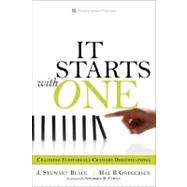
What is included with this book?
J. Stewart Black is a professor at INSEAD, the oldest and largest MBA program in Europe. An internationally recognized scholar on change and transformation, he is a frequent keynote speaker at conferences around the world and company functions. He is regularly sought out to work with leading companies on issues of strategy and strategic change, especially with regard to developing leaders and high-potential managers to initiate and execute change in themselves and others. Dr. Black has been a faculty member previously at the Amos Tuck School of Business Administration at Dartmouth College and The University of Michigan. He is the author of 10 other books and more than 100 articles and case studies that have been used in both university classrooms and corporate boardrooms. Dr. Black has lived, worked, and spent significant time in many countries including, Japan, Singapore, Hong Kong, and France.
Hal B Gregersen is a professor of leadership at INSEAD where he delivers world-class research ideas on leading strategic change and innovation to executives from every continent. He regularly consults with senior teams, conducts executive seminars, and delivers keynote speeches on innovation and change in companies such as Christie’s, Daimler, IBM, Intel, Johnson & Johnson, LG, Marriott International, Nokia, Sun Microsystems, and Yahoo. Before joining INSEAD, Dr. Gregersen was a faculty member at the London Business School, the Tuck School of Business Administration at Dartmouth College, Brigham Young University, and Helsinki School of Economics, as well as a Fulbright Fellow at the Turku School of Economics. He has co-authored 9 other books and more than 90 articles and cases on leading innovation and change that have also been highlighted on CNN and in Business Week, Fortune, Psychology Today, and The Wall Street Journal. Dr. Gregersen calls Finland, France, and the U.S. his homes, having lived in all three countries. He also travels the world, camera in hand (a passionate avocation), photographing diverse people and places to foster deeper insight into the dynamics of innovation and change.
| Foreword | p. xix |
| Preface | p. xxi |
| The Challenge of Leading Strategic Change | p. 1 |
| Magnitude of Change | p. 4 |
| Rate of Change | p. 5 |
| Unpredictability of Change | p. 6 |
| Implications of Change | p. 8 |
| The Crux of the Challenge | p. 10 |
| Simplify and Apply | p. 14 |
| The Fundamentals of Change | p. 16 |
| Barrier #1: Failure to See | p. 21 |
| Blinded by the Light | p. 24 |
| Placing Ourselves at the Center | p. 29 |
| Distorting Our View | p. 34 |
| Upright Maps | p. 38 |
| Summary | p. 40 |
| Solutions and Tools for Breaking through Barrier #1: Helping People See the Need | p. 43 |
| Contrast | p. 43 |
| Confrontation | p. 44 |
| Combining Contrast and Confrontation | p. 45 |
| The Comprehensiveness Mistake | p. 46 |
| The "I Get It" Mistake | p. 46 |
| Creating High Contrast and Confrontation | p. 48 |
| 20/80 Rule | p. 48 |
| Contrast Enhancement Tool | p. 51 |
| More Examples | p. 55 |
| Pulling It All Together | p. 57 |
| Barrier #2: Failure to Move | p. 61 |
| Pulling It All Together | p. 69 |
| Solutions and Tools for Breaking through Barrier #2: Helping People Make the Move | p. 71 |
| Destination | p. 72 |
| Resources | p. 75 |
| Rewards | p. 78 |
| Pulling It All Together | p. 82 |
| Barrier #3: Failure to Finish | p. 85 |
| Getting Tired | p. 86 |
| Getting Lost | p. 94 |
| Overcoming the Final Brain Barrier | p. 97 |
| Solutions and Tools for Breaking through Barrier #3: Helping People Fight through the Finish | p. 99 |
| Providing Champions | p. 99 |
| Charting Progress | p. 103 |
| Change Performance Dashboard | p. 105 |
| Change Communication Plan | p. 107 |
| Pulling It All Together | p. 109 |
| Pulling It All Together | p. 111 |
| One Call That's All | p. 111 |
| Growth for a Change | p. 117 |
| Changing Customers and Suppliers | p. 122 |
| Making Change Personal | p. 131 |
| Summary | p. 138 |
| Getting Ahead of the Change Curve | p. 143 |
| Crisis Change | p. 145 |
| Reactive Change | p. 147 |
| Anticipatory Change | p. 147 |
| Change Penalty | p. 151 |
| Conclusion | p. 153 |
| Index | p. 155 |
| Table of Contents provided by Ingram. All Rights Reserved. |
The New copy of this book will include any supplemental materials advertised. Please check the title of the book to determine if it should include any access cards, study guides, lab manuals, CDs, etc.
The Used, Rental and eBook copies of this book are not guaranteed to include any supplemental materials. Typically, only the book itself is included. This is true even if the title states it includes any access cards, study guides, lab manuals, CDs, etc.